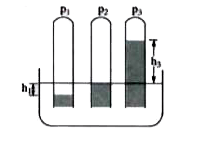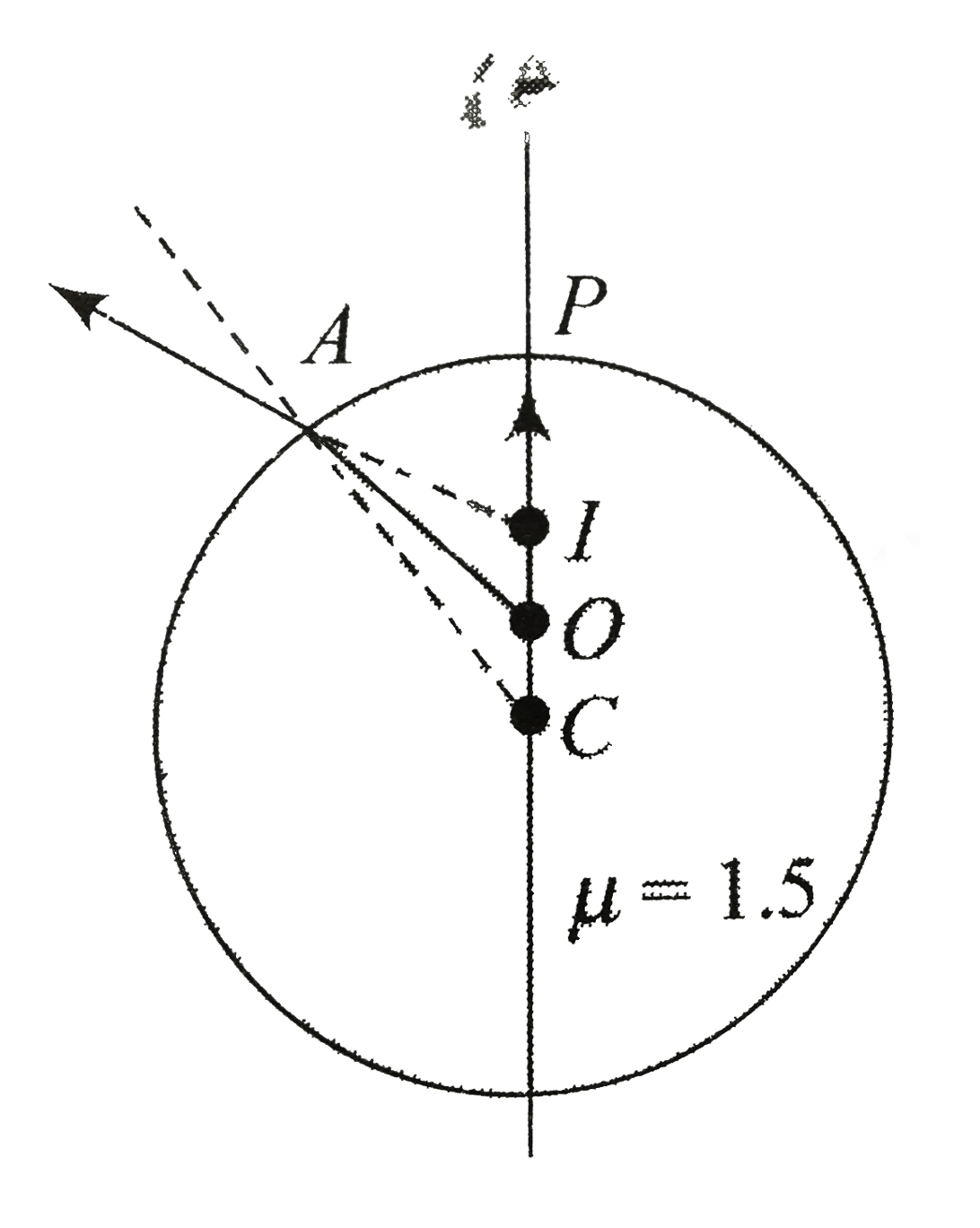A sea diver at depth of 45m exhales a bubble of air that is 1.0 cm in radius. Assuming the ideal behaviour, find out radius of this bubble as it breaks at the surface of water? Solution in Telugu
1.75 cm
1.50 cm
1.25 cm
0.75 cm
The correct Answer is:A
Pressure of 45 m water in terms of mercury level :
h1d1=h2d2
45×1=h2×13.6=h=3.3m.
∴ Pressure at 45 m depth = (0.76+3.3)=4.06m.
P1V1=P2V2
4.06×43π(1)3=0.76×43π(rcm)3
⇒rcm3√4.060.76,rcm=1.75cm
Topper's Solved these Questions
- BOOK - AAKASH SERIESCHAPTER - STATES OF MATTEREXERCISE - PRACTICE SHEET (EXERCISE -I) (LEVEL -II ADVANCED)(MORE THAN ONE CORRECT ANSWER TYPE QUESTIONS)4videos
STATES OF MATTER
- BOOK - AAKASH SERIESCHAPTER - STATES OF MATTEREXERCISE - PRACTICE SHEET (EXERCISE -I) (LEVEL -II ADVANCED)(LINKED COMPREHENSION TYPE QUESTIONS)3videos
STATES OF MATTER
- BOOK - AAKASH SERIESCHAPTER - STATES OF MATTEREXERCISE - PRACTICE SHEET (EXERCISE -I) (LEVEL -I MAINS)(STRAIGHT OBJECTIVE TYPE QUESTIONS)9videos
STATES OF MATTER
- BOOK - AAKASH SERIESCHAPTER - SATURATED HYDROCARBONSEXERCISE - QUESTIONS FOR DESCRIPTIVE ANSWERS10videos
SATURATED HYDROCARBONS
- BOOK - AAKASH SERIESCHAPTER - STOICHIOMETRYEXERCISE - QUESTIONS FOR DESCRIPTIVE ANSWERS59videos
STOICHIOMETRY
Similar Questions
Which of the following shows correct relation between volume and temperature at constant pressure for a given amount of gas
01:58View SolutionConsider gases confined by a liquid, as shown below. Density of the liquid = d.gmL−1h1andh3 in mm and p1,p2andp3 in mm Hg.

Barometric pressure is equal to03:39View SolutionWhen the pressure of 2 litres of O2 gas is doubled and its temperature is also doubled from 300K to 600K, the final volume of the gas is
02:50View SolutionWhy boiling and melting points of hydrocarbons are low ?
View SolutionDistinguish between element and compound?
02:26View SolutionThere is a small air bubble inside a glass sphere (μ=1.5) of radius 10 cm. The bubble is 4.0cm below the surface and is viewd normally from the outside. Find the apparent dipth of the bubble.
 04:28View Solution
04:28View SolutionRadius of an air bubble at the bottom of the lake is r and it becomes 2r when the air bubbles rises to the top surface of the lake. If P cm of water be the atmospheric pressure, then the depth of the lake is
02:29View SolutionFig shows a small air bubble inside a glass sphere (μ=1.5) of radius 10 cm. the bubble is 4.0 cm below the surface and is viewed normally from the outside. Find the apparent depth of the bubble.
 05:40View Solution
05:40View SolutionThere is small air bubble inside a glass sphere (mu = 1.5) of radius 5 cm . The bubble is at 'O' at 7.5cm below the surface of the glass. The sphere is placed inside water (mu = (4)/(3)) such that the top surface of glass is 10cm below the surface of water. The bubble is viewed normally from air. Find the apperent depth of the bubble.
05:09View SolutionThe rate of increase of the radius of an air bubble is 0.5 cm/sec. Find the rate o fincrease of its volume when the radius of air bubble is 2 cm.
View SolutionA small air bubble of radius 0.1 mm is situated at a depth of 10 m below the free surface of water .The external pressure on the bubble will be
View SolutionIf a small air bubble of radius 0.1 mm is formed just below the surface of water, then the pressure inside the air bubble will be
View SolutionAn air bubble is formed at depth h below the surface of water. The pressure inside the bubble is- ( P_(0)= atmospheric pressure, r = radius of bubble)
View SolutionCalculate excess pressure inside an air bubble of radius 1.0 mm and just below the surface of water. What will be the pressure inside the soap bubble?
View SolutionA spherical air bubble of radius r is formed in water. If T be the surface tension of water, the excess pressure inside the bubble is
01:07View Solution

